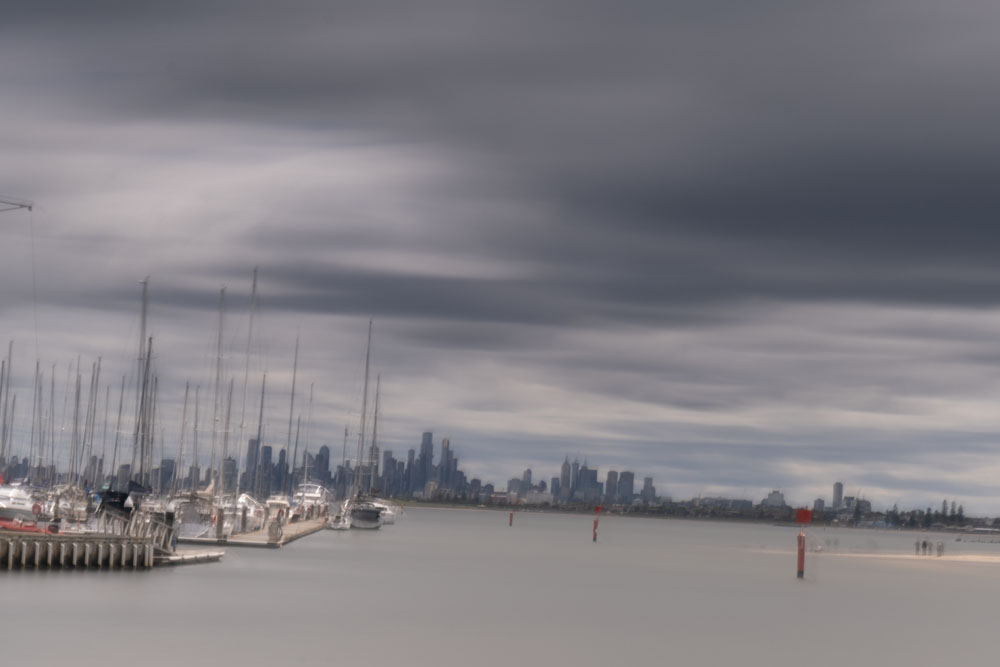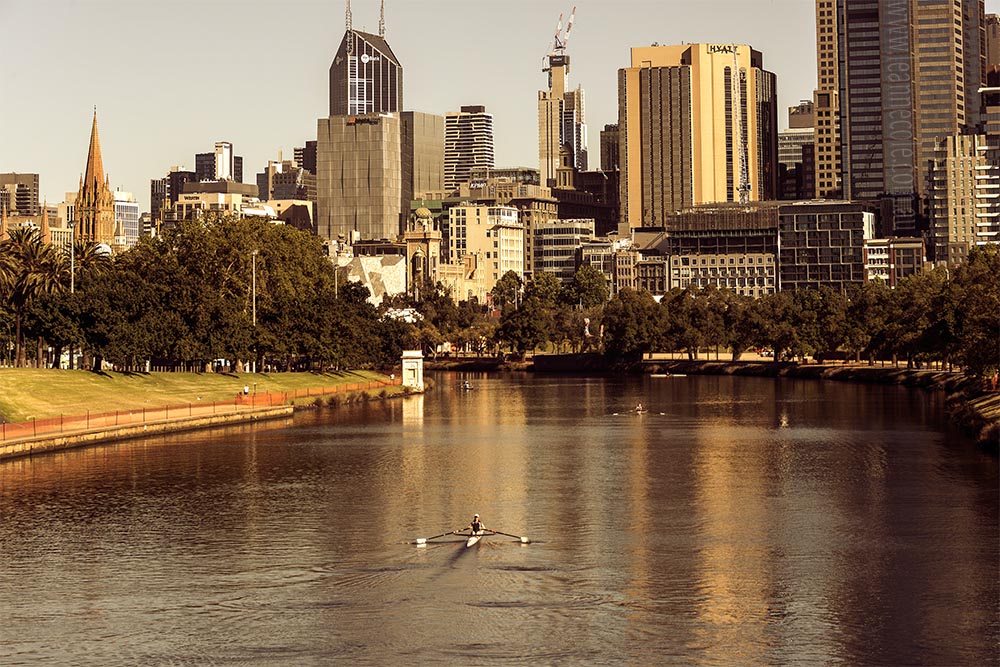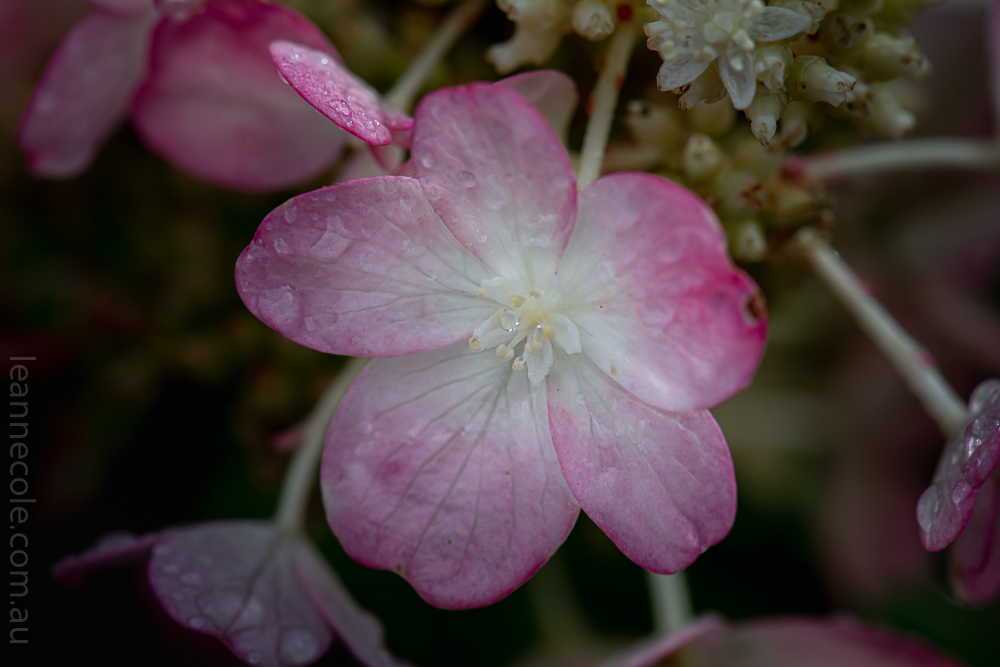I was loaned the Tamron 17-70mm F/2.8 Di III-A2 VC RXD for a month or two from Tamron Australia and was able to get out with it a bit. There is no doubt that it is a great lens. I really enjoyed trying it out and seeing what you could do with it.
However, after saying that I did run into a problem. I wanted to share it with you in case it is something that could happen to you as well.
I love doing long exposure photography and in the last three years I haven’t done a lot, but recently I have had a couple of opportunities to get out and do some.
At first there didn’t seem to be any problems with the Tamron lens. Take a look at this image.
Please note that in this post none of the photos have been processed at all. They are straight from the camera.
The above image seems fairly sharp. I wasn’t unhappy with any of the photos that I took of the Brighton Library.
After here we headed down to the beach at Brighton and I started to get images like the following one. Yeah, I can’t take straight images.
It isn’t your eyes, the image is out of focus. I had so many like this and I couldn’t work out why. The strange thing was that sometimes the images would be sharp and others not.
I couldn’t work out how the ones of the library were so sharp, but these weren’t.
You can see what I mean with how some were okay and others weren’t here. There are two images taken at much the same time. See if you can tell the difference.
You can see that one is sharp and the other isn’t.
It was really windy and since it only seemed to happen at the beach I thought the wind was probably the cause. I knew I would have to get out again.
At the beginning of December I went on a trip with a couple of friends to Phillip Island and while there I had another opportunity to take some long exposures.
The same thing happened.
Some photos were in focus and many weren’t.
Check out these two.
Slightly different composition, but you can see one is fairly sharp and the other isn’t. It was a bit windy, but I didn’t think it was enough to cause that with my tripod. I was using my 3 Legged Thing tripod Bucky. While a small tripod it is usually very sturdy.
I started to wonder if there was something different with this lens. My friend said “did you turn off the stabilization” and I said there is no button. In my mind, and I’m sure in the mind of many others, there was no stabilization in the lens because all my other lenses had a button or slider thing on the side where you could turn it on or off.
The next day I want out one more time to do some more, but this time used Winston, also from 3 Legged Thing but a bigger and very sturdy tripod.
As you can see it happened again.
Time to really do some research.
Turns out the lens does have stabilization, and it is something you need to check with all Tamron lenses, especially for mirrorless. It is built into the lens. Apparently there is some AI thing that is meant to be able to tell when to turn it off or leave it on which would explain why some images were sharp but most weren’t.
I have since found out that you can turn it off in camera. It is something you would need to remember to do. I am not sure I would always remember.
It is a great lens and I did enjoy using it. I know I had trouble with it, but now that I know that, it wouldn’t happen again.
It isn’t one I would buy, but only because I have the Fujifilm 16-55mm so it wouldn’t make sense for me. However it is a good length and if you are looking for a lens around the 17-70mm then I would recommend this one from Tamron. Click here to get more details.
I used it for other photography and I will be doing posts on those images some time soon.












Good reminder about turning off the stabilisation when doing Long Exposures. I would have forgotten too! I remember taking something ne LEs on the coast with you and finding the same problem!
Yeah, it is. Not something I tend to think about because I usually leave it switched off. Oh yes, those were the days when we used to go out and take photos together. Thanks Chris.
This is untreated and I hope u won’t get offended. I watched your Lightroom tutorial and I would suggest two things. It wouldn’t hurt if your tutorial was shorter (some stuff could be figured out “behind the scenes”). Also, it would be a good idea to not tell people that u “hate Lightroom” when u are doing a tutorial on it. As I said, I hope u won’t get offended.
No not offended at all Svetlana. Didn’t realise I said that about Lightroom. I don’t like it as much as Photoshop, I think you can do a whole lot more in PS. I am a bit lazy with the tutorials. Maybe I need to be better with them. I think too, I don’t really know what to do because I don’t really get any feedback, so thank you for giving me some.
I’m considering that lens. In fact, I would have bought it several months ago if not for the fact that it doesn’t have an appetite ring :(.
It is a good lens, and it is fairly easy to change the aperture on the camera, you just have to remember to switch off stabilization when you put it on a tripod, or do long exposures.
Wow, it seems that Tamron needs to put a switch on the side of the lens to simplify that function. Blurry images and I don’t get along, nor do unprocessed photos most of the time. I hope you took some different photos with a different lens that were focused nicely.
Yeah, it is strange that they didn’t do it. It is easy to turn off the function in the camera, but you have to remember to do it. Blurry images and me don’t get along either. I don’t normally show unprocessed, but I didn’t want to process blurry images, not much point. The problem was I didn’t realise until I got home. Thankfully both places are not that far away and I can go again. Thank you John.
It’s nice that you can go back there for new photos! I have uploaded unprocessed photos at the request of followers before…
It is great, I am looking forward to going back to Brighton. Yeah, sometimes unprocessed photos show something important too.
I’ve had similar experiences with other lenses on my Fuji X-T5. I don’t like having to remember to change the IS in-camera as opposed to flicking a wee switch on the lens.
It is a bit annoying. I know with my other lenses that had it, for most of them I would just turn it off and keep it off. Well except my macro lens. The switch is also good because it does remind you. I wonder how people will go with it. Thanks Ceci.